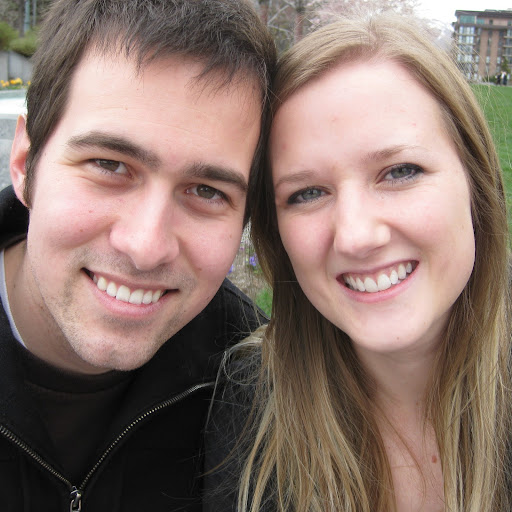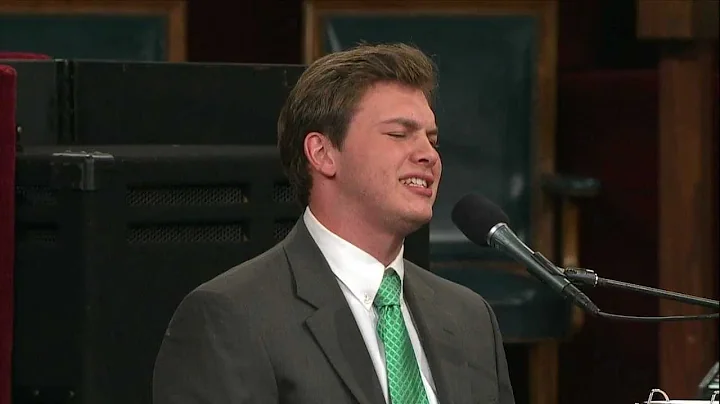Joshua Adam Larson
age ~54
from San Diego, CA
- Also known as:
-
- Joshua A Larson
- Josh A Larson
- Phone and address:
-
9655 Stonecrest Blvd, San Diego, CA 92123
8585763677
Joshua Larson Phones & Addresses
- 9655 Stonecrest Blvd, San Diego, CA 92123 • 8585763677
- 3506 Atlas St, San Diego, CA 92111
- Saint Paul, MN
- Menomonie, WI
Medicine Doctors

Dr. Joshua M Larson, Minneapolis MN - MD (Doctor of Medicine)
view sourceSpecialties:
General Surgery
Age:
44
Address:
HENNEPIN COUNTY MEDICAL CENTER DEPARTMENT OF SURGERY
701 Park Ave Suite P-5, Minneapolis, MN 55415
6128732810 (Phone), 6129044297 (Fax)
701 Park Ave Suite P-5, Minneapolis, MN 55415
6128732810 (Phone), 6129044297 (Fax)
Languages:
English
Education:
Medical School
Medical College of Wisconsin
Graduated: 2011
Medical College of Wisconsin
Graduated: 2011

Joshua H. Larson
view sourceSpecialties:
Diagnostic Radiology
Work:
Marshfield ClinicMarshfield Clinic Eau Claire Center Multi Specialty
2116 Craig Rd, Eau Claire, WI 54701
7158584700 (phone), 7158584520 (fax)
2116 Craig Rd, Eau Claire, WI 54701
7158584700 (phone), 7158584520 (fax)
Languages:
English
Spanish
Spanish
Description:
Dr. Larson works in Eau Claire, WI and specializes in Diagnostic Radiology. Dr. Larson is affiliated with Ministry Sacred Heart Hospital.

Joshua H Larson
view sourceSpecialties:
Radiology
Diagnostic Radiology
Diagnostic Radiology
Education:
University of Illinois at Chicago (2006)

Joshua M Larson
view sourceUs Patents
-
System And Process For Removal Of Pollutants From A Gas Stream
view source -
US Patent:6974565, Dec 13, 2005
-
Filed:Mar 4, 2003
-
Appl. No.:10/382348
-
Inventors:Kathleen S. Pahlman - Bloomington MN, US
Steve C. Carlton - Emily MN, US
Ray V. Huff - Florence AL, US
Charles F. Hammel - Escondido CA, US
Richard M. Boren - Bakersfield CA, US
Kevin P. Kronbeck - Baxter MN, US
Joshua E. Larson - Burnsville MN, US
Patrick A. Tuzinski - Bloomington MN, US
Steve G. Axen - Golden CO, US -
Assignee:Enviroscrub Technologies Corporation - Bloomington MN
-
International Classification:B01D053/46
B01D053/50
B01D053/56 -
US Classification:423210, 4232391, 42324401, 4232155, 95 19, 95 21, 96113, 96114, 422170, 422171, 422178
-
Abstract:System for removal of targeted pollutants, such as oxides of sulfur, oxides of nitrogen, mercury compounds and ash, from combustion and other industrial process gases and processes utilizing the system. Oxides of manganese are utilized as the primary sorbent in the system for removal or capture of pollutants. The oxides of manganese are introduced from feeders into reaction zones of the system where they are contacted with a gas from which pollutants are to be removed. With respect to pollutant removal, the sorbent may interact with a pollutant as a catalyst, reactant, adsorbent or absorbent. Removal may occur in single-stage, dual-stage, or multi-stage systems with a variety of different configurations and reaction zones, e. g. , bag house, cyclones, fluidized beds, and the like. Process parameters, particularly system differential pressure, are controlled by electronic controls to maintain minimal system differential pressure, and to monitor and adjust pollutant removal efficiencies.
-
System And Process For Removal Of Pollutants From A Gas Stream
view source -
US Patent:20020150516, Oct 17, 2002
-
Filed:Jan 11, 2002
-
Appl. No.:10/044089
-
Inventors:John Pahlman - , US
Kathleen Pahlman - Bloomington MN, US
Steve Carlton - Emily MN, US
Ray Huff - Florence AL, US
Charles Hammel - Escondido CA, US
Richard Boren - Bakersfield CA, US
Kevin Kronbeck - Baxter MN, US
Joshua Larson - Burnsville MN, US
Patrick Tuzinski - Bloomington MN, US
Steve Axen - Golden CO, US -
Assignee:EnviroScrub Technologies Corporation
-
International Classification:B01D053/50
B01D053/46
B01D053/56
B01D053/60 -
US Classification:422/171000, 423/244060, 423/239100, 423/247000, 422/170000, 422/105000, 422/109000, 422/110000, 422/112000
-
Abstract:System for removal of targeted pollutants, such as oxides of sulfur, oxides of nitrogen, mercury compounds and ash, from combustion and other industrial process gases and processes utilizing the system. Oxides of manganese are utilized as the primary sorbent in the system for removal or capture of pollutants. The oxides of manganese are introduced from feeders into reaction zones of the system where they are contacted with a gas from which pollutants are to be removed. With respect to pollutant removal, the sorbent may interact with a pollutant as a catalyst, reactant, adsorbent or absorbent. Removal may occur in single-stage, dual-stage, or multi-stage systems with a variety of different configurations and reaction zones, e.g., bag house, cyclones, fluidized beds, and the like. Process parameters, particularly system differential pressure, are controlled by electronic controls to maintain minimal system differential pressure, and to monitor and adjust pollutant removal efficiencies. Reacted sorbent may be removed from the reaction action zones for recycling or recycled or regenerated with useful and marketable by-products being recovered during regeneration.
-
Systems And Processes For Removal Of Pollutants From A Gas Stream
view source -
US Patent:20030113239, Jun 19, 2003
-
Filed:Sep 13, 2001
-
Appl. No.:09/951697
-
Inventors:John Pahlman - Bloomington MN, US
Kathleen Pahlman - Bloomington MN, US
Steven Carlton - Emily MN, US
Ray Huff - Florence AL, US
Charles Hammel - Escondido CA, US
Richard Boren - Bakersfield CA, US
Kevin Kronbeck - Baxter MN, US
Joshua Larson - Burnsville MN, US
Patrick Tuzinski - Bloomington MN, US
Steve Axen - Golden CO, US -
International Classification:B01D053/46
B01D053/50
B01D053/56 -
US Classification:422/171000, 422/112000, 422/170000, 422/169000, 422/172000
-
Abstract:Systems and process for wet and combinations of wet and dry removal of targeted pollutants, such as oxides of sulfur, oxides of nitrogen, and oxides of carbon from combustion and other industrial process gases and processes utilizing the system. Oxides of manganese are utilized as the primary sorbent in the system for removal or capture of pollutants. In wet removal, oxides of manganese are mixed in a slurry which is introduced into reaction zones of the system. In dry removal, the oxides of manganese are introduced from feeders into reaction zones of the system where they are contacted with a gas from which pollutants are to be removed. Removal may occur in single-stage, dual-stage, or multi-stage systems with at least one of the reaction zones being a wet scrubber. A variety dry scrubber may be utilized in combination wet and dry removal systems. Process parameters, particularly system differential pressure, are controlled by electronic controls to maintain minimal system differential pressure, and to monitor and adjust pollutant removal efficiencies. Reacted sorbent may be removed from the reaction action zones for recycling or recycled or regenerated with useful and marketable by-products being recovered during regeneration.
Name / Title
Company / Classification
Phones & Addresses
Principal
J Larson Consulting
Farming · Business Consulting Services
Farming · Business Consulting Services
1030 Roma Ave, Saint Paul, MN 55113
Principal
Progressive Pulmonary Homecare Inc
Pulmonary Care
Pulmonary Care
4217 24 Ave S, Minneapolis, MN 55406
Resumes

Architect
view sourceLocation:
Newport Beach, CA
Industry:
Architecture & Planning
Work:
Urban Reality Design Studio - Greater San Diego Area since Jan 2013
Architectural Designer
Cuningham Group - Greater Minneapolis-St. Paul Area Sep 2007 - Oct 2012
Architectural Designer
American Institute of Architecture Students 2007 - 2009
FORUM Chair
Architectural Designer
Cuningham Group - Greater Minneapolis-St. Paul Area Sep 2007 - Oct 2012
Architectural Designer
American Institute of Architecture Students 2007 - 2009
FORUM Chair
Education:
NewSchool of Architecture and Design 2012 - 2014
Master of Architecture (M.Arch.), Architecture University of Minnesota-Twin Cities 2003 - 2008
B.S., Architecture
Master of Architecture (M.Arch.), Architecture University of Minnesota-Twin Cities 2003 - 2008
B.S., Architecture
Skills:
Sketchup
Autocad
Revit
Architectural Drawings
Architecture
Model Building
Design Research
Microsoft Office
Sketching
Photoshop
Illustrator
Indesign
Graphic Design
Team Leadership
Modeling
Space Planning
Interior Architecture
Premiere
Microsoft Word
Rhinoceros
Sustainable Design
Architectural Design
Rendering
Adobe Creative Suite
Autocad Architecture
Building Information Modeling
Autocad
Revit
Architectural Drawings
Architecture
Model Building
Design Research
Microsoft Office
Sketching
Photoshop
Illustrator
Indesign
Graphic Design
Team Leadership
Modeling
Space Planning
Interior Architecture
Premiere
Microsoft Word
Rhinoceros
Sustainable Design
Architectural Design
Rendering
Adobe Creative Suite
Autocad Architecture
Building Information Modeling
Certifications:
Leed Green Associate

Risk Advisor At Cox Insurance Associates, Inc.
view sourceLocation:
Greater Minneapolis-St. Paul Area
Industry:
Insurance

Architectural Designer
view sourceLocation:
Greater Minneapolis-St. Paul Area
Industry:
Architecture & Planning

Associate Scientist I
view sourceLocation:
600 Hester Ave, Normal, IL 61761
Industry:
Research
Work:
Astrazeneca
Associate Scientist I
Associate Scientist I
Education:
Illinois State University 2014 - 2016
Bachelors, Biology
Bachelors, Biology
Skills:
Molecular Biology
Pcr
Laboratory Skills
Bioinformatics
Western Blotting
Microscopy
Pcr
Laboratory Skills
Bioinformatics
Western Blotting
Microscopy
Languages:
English

Researcher 2
view sourceLocation:
Saint Paul, MN
Industry:
Higher Education
Work:
University of Minnesota
Researcher 2
Researcher 2

Aggregate Ooeration Manager
view sourceIndustry:
Construction
Work:
Anderson Brothers
Aggregate Ooeration Manager
Aggregate Ooeration Manager

Registred Sales Assistant At Us Bank
view sourcePosition:
RegisteredSales Assistant at US Bank
Location:
Greater Minneapolis-St. Paul Area
Industry:
Financial Services
Work:
US Bank - Greater Minneapolis-St. Paul Area since Oct 2009
RegisteredSales Assistant
US Bank Investments May 2008 - Oct 2009
Sales Support Lead
AEGON Asset Management Jun 2006 - Dec 2008
INTERNAL WHOLESALER
Transamerica 2006 - 2007
Wholesaler
RegisteredSales Assistant
US Bank Investments May 2008 - Oct 2009
Sales Support Lead
AEGON Asset Management Jun 2006 - Dec 2008
INTERNAL WHOLESALER
Transamerica 2006 - 2007
Wholesaler
Education:
Hamline University 1995 - 1998
License Records
Joshua James Larson
License #:
70104782 - Active
Category:
EMS Licensing
Issued Date:
Jun 27, 2016
Expiration Date:
Jun 30, 2018
Type:
EMT-Paramedic
Joshua Mark Larson
License #:
70103621 - Active
Category:
EMS Licensing
Issued Date:
Jun 21, 2016
Expiration Date:
Jun 30, 2018
Type:
EMT-Basic
Lawyers & Attorneys

Joshua Ryan Larson, Minneapolis MN - Lawyer
view sourceAddress:
Hennepin Co Atty's Ofc
C-2000 300 S 6Th St, Minneapolis, MN 55487
C-2000 300 S 6Th St, Minneapolis, MN 55487
Licenses:
Minnesota - Authorized to practice 2008

Joshua Larson - Lawyer
view sourceSpecialties:
Contracts & Agreements
ISLN:
922450724
Admitted:
2009
University:
Thomas Jefferson SOL, San Diego, CA; Univ of California Riverside, CA
Googleplus

Joshua Larson
Lived:
Minneapolis,MN
Slayton, MN
Slayton, MN
Work:
Bad Sleep Well - Vocals, Guitar (2009)
Hennepin County Attorney's Office - Assistant Hennepin County Attorney (2009)
Hennepin County Attorney's Office - Assistant Hennepin County Attorney (2009)
About:
I live in downtown Minneapolis.
Tagline:
Ok... what is this?
Bragging Rights:
I'm just a singer in a rock n' roll band... and a prosecutor.

Joshua Larson
Work:
Cuningham Group Architecture, P.A. - Architectural Designer (2007)
Education:
University of Minnesota - Architecture

Joshua Larson
Education:
Boise State University - Accounting, Brigham Young University-Idaho - Accounting
Tagline:
I'm awesome and good looking

Joshua Larson
Work:
The Woodman
Education:
UVU - Street rod
Tagline:
The coolest person you know!!

Joshua Larson
Work:
Bushido Inc. - Graphic Designer (2009)

Joshua Larson

Joshua Larson

Joshua Larson
Flickr
Youtube
Myspace
Plaxo

Joshua Larson
view sourceProduction Support Manager at Comcast

Joshua John Larson
view source
Joshua Larson
view source
Joshua Larson
view source
Joshua A. Larson
view source
Joshua Lydell Larson
view source
Joshua A. Larson
view source
Joshua Scott Larson
view source
Joshua Larson
view sourceClassmates

Joshua Larson
view sourceSchools:
Braham High School Braham MN 2000-2004
Community:
Scott Nelson, Charlene Smith

Joshua Larson
view sourceSchools:
Germantown High School Germantown WI 1995-1999
Community:
Benny Esparza, Terri Novotny

Joshua Larson
view sourceSchools:
Tuacahn High School Ivins UT 1997-2001

Joshua Larson
view sourceSchools:
Echo Park Elementary School Burnsville MN 1979-1984, Valley Middle School Apple Valley MN 1985-1988

Joshua Larson
view sourceSchools:
Berthoud High School Berthoud CO 1997-2001
Community:
Connie Klug, Marsha Schleiger, Richard Merring

Joshua Larson
view sourceSchools:
Newark High School Newark IL 1994-1998
Community:
Reeva Townsend, Michelle Dunbar, Melissa Hook, Adam Lechowicz, Lori Mitchell, Tom Jane, Keith Newark, Ryan Mathre, Carrie Clemens, Laura Siebels, Sarah Gravley, Jamie Agnich

Joshua Larson
view sourceSchools:
Southridge High School Kennewick WA 1998-2002
Community:
Sara Kirk

Joshua Larson
view sourceSchools:
West Black Hills High School Olympia WA 2000-2004
Community:
David Rios, Kenneth Laplaunt, Marsha Atencio, Karl Clark
Get Report for Joshua Adam Larson from San Diego, CA, age ~54

















